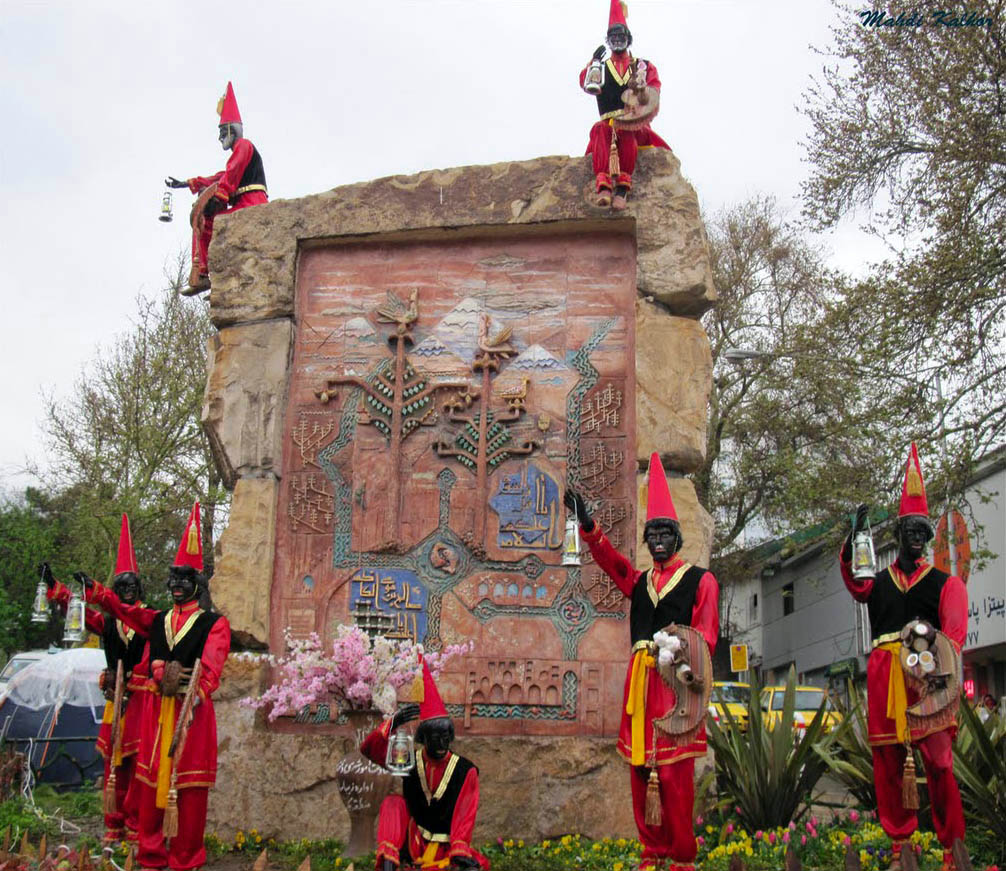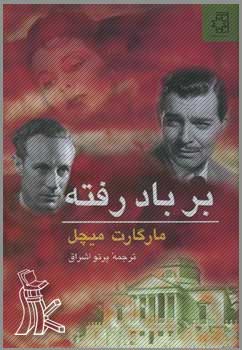The untimely death of a black man causes a stir in the press, causing intellectuals and activists to point to a long history of slavery and institutionalized racism in America. This isn’t a headline from 2015 (although it could be); it’s a description of how the Iranian press treated the assassination of Malcolm X. Iran, like many countries in North Africa and West Asia, has its own history of slavery, one that has been slowly forgotten in the century since its abolition; a history that is finally coming to light with a new generation of Iranian and Iranian-American historians. Beeta Baghoolizadeh, a UT alumna who is now a doctoral candidate in History at the University of Pennsylvania, shares both the history of abolition in Iran and some personal observations on the difficulties of researching a topic long considered taboo in Persian society.
Guests
 Beeta BaghoolizadehAssistant Professor of History and Africana Studies at Bucknell University
Beeta BaghoolizadehAssistant Professor of History and Africana Studies at Bucknell University
Hosts
 Christopher RosePostdoctoral Fellow, Institute for Historical Studies, The University of Texas at Austin
Christopher RosePostdoctoral Fellow, Institute for Historical Studies, The University of Texas at Austin
Let’s start out by talking about the institution of slavery in Iran, which, I think anybody who’s seen the relics of Persepolis and the ancient Persian monuments knows goes back into antiquity. What period are you looking at, when you look at the institution of slavery?
I am looking at the late 19th and early 20th century. The abolition of the slave trade really started in 1848, and the abolition of the institution as a whole took place in 1928.
You mentioned that the abolition of the slave trade took place in 1848. Was that an internal decision, or did it have to do with, for example, the increase of British patrols in the Indian Ocean?
Well, that’s a bit of a complicated question. If we back up a little bit, in the 19th century, Iran was really located at the crossroads of three major slave trades: the Caucasian slave trade in the north, the Central Asian slave trade, also in the north, and the East African slave trade, which was brought up from the south through the Persian Gulf or land routes over from Arabia.
There’s this sense within the scholarship that the northern slave trades petered out with the strengthening of Russia, with the treaty of Turkmen-chai in the 1830s, with a stronger presence of Russia in the Caucasus. Once that happens there’s really a sense that the number of “white” slaves really decreased in Iran, so you have an increased demand for East African slaves. When I say East African, I’m really talking about Ethiopian or Eritrean slave, but those sorts of labels aren’t really temporally adequate – we can use the term Abyssinian for them.
By the 1840s, there’s this increased pressure on the Iranian government to abolish the slave trade and what they’re talking about is really the slave trade of the south. In 1848, the Shah of Iran signs a decree, and then he dies three days later.
–wow–
So, no one really cares because the British wanted the Iranians to abolish the slave trade, but the guy who had abolished it is dead.
In 1852, the British came back and reminded the Iranians that they had agreed to abolish the slave trade. Then you see some more government efforts toward abolishing the slave trade. You have letters from the Prime Minister of the time, Amir Kabir, writing to shaykhs in the south saying, “Please stop bringing ‘those blacks’ to our coast.” There’s already a sense of a system of racialized slavery in Iran, and there are some actors trying to dismantle it. Nobility, the royal family themselves, well-to-do merchants, all of them tried to have or had slaves in their household.
So, at this point it’s important to talk about what this meant, what did slavery look like in Iran? In the past, when people have tried to describe slavery in Iran, they said things like, “Look at how Iran had domestic slavery, they weren’t doing that many things, it was a more benevolent institution, it’s not like they were being whipped.” There’s a sense that they’re talking against American plantation slavery. They don’t want the institution of slavery in Iran to be associated with American plantation slavery which, for my purposes, tends to be really unhelpful.
Slavery is, at its core, a violent institution, it’s a traumatizing institution. I think when people describe it they fall into this trap of saying, “see, it’s so much better,” and that’s something I want to stay away from.
But, just to give a sense of what it is, you didn’t have too many plantations in Iran. The people who were brought over as slaves were mostly women; you had eunuchs; and you also had some men. The duties that you would have to perform, some people would describe them as domestic, some people would point out that it’s a gendered thing, that the women were sexually vulnerable, all sorts of things that you think about when you think about slavery. So, you don’t need to think about a cotton plantation to know that you were at your master’s disposal. Plantation slavery doesn’t need to be the definition that determines whether or not something is slavery.
You had mentioned that the Caucasian and Central Asian slave trades had sort of petered out and that the East African slave trade was officially discouraged, if not necessarily banned or prohibited. Who, demographically speaking, were the slaves at this point? Were they mostly Abyssinian or do we still see some Caucasian or Central Asian slaves?
You still see some of the “white” slaves coming in. You have some Circassian slaves–they’re Caucasian. The Central Asian slavery was sustained through smuggling. There is that presence, it doesn’t totally disappear.
What happens, though, is that the presences of blacks-the Abyssinians as slaves-becomes the symbol of slavery in Iran. What you do see is, by the end of the 19th century, there is this racialized sense of what slavery is, and that blacks are slaves. As I mentioned earlier, you have these letters sent to the port cities saying, “Don’t bring those blacks in,” even though the presence of African traders in Iran as free traders, as free men, existed. There were a lot of exchanges with the Swahili coast, historically, going back centuries, but by the late 19th century there is this sense that if you see someone with darker skin in Iran, that person is probably a slave.
You have a language to describe that.

You mention the connection between slavery and the East African trade, which would have come in to the Persian Gulf ports. Is that where you tended to find slaves? Or were they scattered throughout the country?
They were scattered across the country in urban centers. So, you had them in Tehran, you had them in Isfahan, you had them on the southern coast. You probably had them in Mashhad, because that’s where the larger merchant families were. It’s not only that they were coming in through the port cities, but when the British started patrolling the ports in the 1870s, the trade switched to overland routes. So, a wealthy merchant would get up, decide he was going to perform his obligatory pilgrimage to Mecca, perform the hajj, go to the slave market in Mecca and pick up a slave, and come back, and that was a sign of his prestige. So, the trade of slaves becomes something that’s not done in Iran anymore because you can’t have ships or dhows coming in, and unloading slaves the way they would have been able to do before, or you have an underground slave trade.
I haven’t been able to find any records that say where slaves were being sold at this time, and I get the sense that they were being sold in private homes, that they were being sold privately in homes. But it’s definitely not something that’s limited to the port cities, it’s something that’s being practiced all over the country and, of course the further north you go, the easier it was to smuggle in Central Asian women or Circassian women.
You mentioned that slavery was abolished in 1928.* What was the motivation? Was there a popular movement, or was it done by royal decree? At this point we’re in the reign of Reza Shah.
That’s such an interesting question, and it’s one that I’ve really been grappling with. As far as the legislation goes, it was a royally introduced piece of legislation into Parliament. Because it came from Reza Shah or one of his close deputies there was a sense that it had to be fast forwarded through parliament. And the discussion in parliament was “Do we want to abolish slavery? Do we not want to abolish slavery? What is the role of Islam and slavery? Why do we even have slaves?” There is a statement made multiple times that we really don’t have slaves, it’s really the Arabs who have slaves, and this piece of legislation would keep those random merchants along the borderlands from bringing in slaves.
So, already they’re excusing any Iranians from having anything to do with slavery, within parliament. There are two arguments – one side says, “We don’t need to abolish slavery right now, because it doesn’t really exist in our country. And when it does exist, it’s done by foreigners, and even when it’s done by foreigners it’s a positive institution because you’re taking people who are savages – vahshi – you’re taking people who are of the jungle – jangali – and you’re civilizing them.” We have the same sort of civilizing language of slavery that we’re likely familiar with from the American example.
The other side doesn’t even make that great of an argument. They just say that we have to do this because we’re a modern country, and we want to be more modern. And they vote, and they pass it, which was to be expected because the king was the one who wanted it to happen.
It’s interesting because it overlaps with this period of wanting to seem modern, and from the sources that I’ve looked at it seems like what’s happening is that people were aware that most progressive, modern countries in the world have abolished slavery and there’s a sense that it’s embarrassing – what are other countries going to think of this? At this time, Iran is joining the League of Nations, the Geneva Convention, you can’t have slaves. There’s a sense of wanting to fast forward and meet other nations where they’re at – well, not all other nations, but the choice European nations and the U.S.- where they’ve all abolished slavery for decades. There’s a sense that it’s embarrassing, and there’s an interest in wanting to control that.
What I’ve seen is that the abolition of slavery really takes on an element of erasure, an element of willful forgetting. It’s not really spoken about, and the remnants of it are sanitized. It’s abolished in 1928.* The major government building where you would have seen slavery was the harem, right? That’s where the Shah would have kept his wives because the Qajar shahs, they had their choice of women. That’s where their wives would have had slaves and servants, and the eunuchs would have been guarding it. Right before abolition, Reza Shah had that torn down. You can’t go and see where the slaves slept or what was going on. Some people have pointed out that this was about the modernization of women – you don’t want polygamy to be so central in the government, but you also don’t want slavery to be so central in the government. And this continues on, and continues to this day.

You mentioned in our discussions outside the studio that a lot of people in Iran either don’t acknowledge or don’t even know that the country had a history of slavery. Is that a legacy of this erasure of the physical remnants of the institution?
I would say that it wasn’t just a physical erasure, but that there was an intellectual erasure of the history of slavery as well. One interesting example is Hajji Firouz.
For anyone who’s familiar with the Iranian new year’s tradition, you’re familiar with three things: One, that the Iranian or Persian New Year takes place on the first day of spring, it’s the spring equinox; the second is that a lot of Iranians will jump over fire, the last Tuesday of the year; and the third thing is that you have a black faced character that shows up. He’s not quite the Santa Claus and he has this rhyme that goes:
Oh my master, hold your head up high
Oh master, it’s No Ruz, be happy
He’s really there to make his master smile. Anyone looking at this would immediately say that this is someone acting as a minstrel in blackface. Whereas, some time after abolition happened, there have been all of these theories about how Hajji Firouz is really just this Zoroastrian character, and they draw upon this idea that Zoroastrians hold fire sacred, they use it in a lot of their ritual practices, the smoke blackened his face, and that’s why his face is so black.
This is sort of ridiculous. Let’s be honest, it’s a very far fetched stream of logic. The more logical thing would be that Iran had a history of slavery, some of them were called Hajji Firouz. Nasir al-Din Shah, the kind who ruled Iran from 1848 – 1896, had a black eunuch in his court named Hajji Firouz. It’s not that strange to think that this character is somehow related to the history of slavery.
In 1951, the poet Mehdi Akhavan Sales wrote a poem about No Ruz, and in this poem he’s talking about a heralder, and then he annotates it, and he says, “Some people might say that this heralder is Hajji Firouz–and this is from 1951, and he’s familiar with southern Iran and northeastern Iran, and he says, “the practice of Hajji Firouz is a dehumanizing practice.” It harkens back to our history of slavery, and it’s about one man entertaining another man in the lowest of ways. This is in 1951, but as you go further away from abolition, there are all these theories about how this is actually a Zoroastrian practice.
There’s this interest in tying present day cultural traditions to ancient Iran to pre-Islamic Iran, to Zoroastrianism, to try to legitimize them. This is the product of nationalism, this is the product of Reza Shah emphasizing the Aryan past, this is the product of Muhammad Reza Shah emphasizing Cyrus the Great — I cannot tell you how many people have come and said, “We never had slaves; Cyrus the Great freed them all.” There’s a sense in which Ancient Iran becomes the marker for what ‘true Iran’ is. That erases their understanding of their recent history, but there is an erasure, and it’s something that I still struggle with.
This is in such strong contrast to the way that we in the United States have dealt with the legacy of slavery, but, of course it’s important to remember that slavery wasn’t just an American institution–
–I’m going to stop you right there. It wasn’t just an American phenomenon. What happens is that the Civil Rights movement really captures everyone’s attention. This is something that was heavily reported in Iranian newspapers, they followed it with great interest. From there, they learned about the legacy of slavery and racial strife that followed that as a social reality in the U.S. The number of black slaves brought into Iran were far fewer than the number of black slaves that were brought into the U.S., and so you already have a different sort of population dynamic going on. What happens during the Civil Rights movement, though, is that it’s so heavily publicized, and people look at it and think, “That’s what slavery and its aftermath looks like.”

To the point that it even effects how people think of the word ‘slavery.’ The 1928 law that abolishes the institution of slavery, it uses a word, and it’s a blanket word that has historically applied to all forms of slavery — bardehdari, which literally means ‘having a slave.’ Today, if you talk to people, they’ll tell you, “Oh, we didn’t have bardehdari, that was an American thing.” It’s because bardehdari has taken on this connotation of plantation slavery, of extreme economic slavery. The American example really hijacked the story of slavery globally. Right now, if you say ‘slavery’ or ‘slave,’ people are going to think Georgia, or …
—Gone with the Wind—
—Gone with the Wind! What a great example! Gone with the Wind was such a big deal in Iran. The film was dubbed, it won awards in Iran for being the best dubbed movie. It was a novel that a lot of people read. I’m an Iranian American, a lot of people in my parents’ generation loved that book.
–in Persian–
–in Persian. They read that book in Persian. A lot of books were translated: Uncle Tom’s Cabin, Alex Haley’s Roots, The Autobiography of Malcolm X. Actually, The Autobiography of Malcolm X was serialized in the newspapers shortly after his assassination, so that just tells you how quickly it was translated because the audience was there. It’s interesting that they had such a strong global outlook, but then it’s also a question: why was their attention so much on the American example to the point that they’ve forgotten their own history of slavery?
Note:
*The Iranian year 1308 corresponds to 1928-29. The law was passed in February 1929.
Sources and Further Reading:
Mehdi Akhavan-Sales, Arghanun (Tehran: Morvarid Publications, 1951).
Seyyed Ali Al-e-Davud, Asnād va Namih-hayi Amir Kabir. (Tehran: The National Library and Archives Publications, 2011). Translation of Title: Amir Kabir’s Letters and Documents.
Narges Alipour, Asnad-i Bardi Furushi Va Man’ An Dar ‘Asr Qajar (Tehran: Parliamentary Archives Publications, 2011). [Translation of title: Documents Regarding the Slave Trade and Abolition during the Qajar Period.]
For more on popular and academic debates on Haji Firuz, as well as traditions associated with him, please see: Mahmoud Omidsalar, “ḤĀJI FIRUZ”. Encyclopedia Iranica. Retrieved 2015-10-31.
Tallinn Grigor. Building Iran: Modernism, Architecture, and National Heritage under the Pahlavi Monarchs (New York: Periscope/Prestel, 2009).
“Slavery Convention of Geneva,” International Conciliation (Carnegie Endowment for International Peace, no. 236), 25 September 1926. “Annual Report by the Council,” Slavery Convention of the League of Nations, 11 June 1931
Liubov Kurtynova-D’Herlugnan, The Tsar’s Abolitionists: The Slave Trade in the Caucasus and Its Suppression (Boston: Brill, 2010).
Mina Marefat. “Building to Power: architecture of Tehran, 1921-1941.” Ph.D. diss. Massachussetts Institute of Technology Department of Architecture, 1988
Behnaz Mirzai. “Slavery, the abolition of the slave trade, and the emancipation of slaves in Iran (1828- 1928)” Ph.D. diss. York University Department of History, 2004.
Muzakarat-i Majlis, 26th Assembly, (Tehran, 1928)
Photograph of Haji Firuz From Nasir Al-Din’s Albums. Golestan Palace Archives, Album 42-1, Photo 362.
Thomas Ricks, “Slaves and Slave Trading in Shi’i Iran, AD 1500-1900,” JAAS 36, 4 (2001), 412.